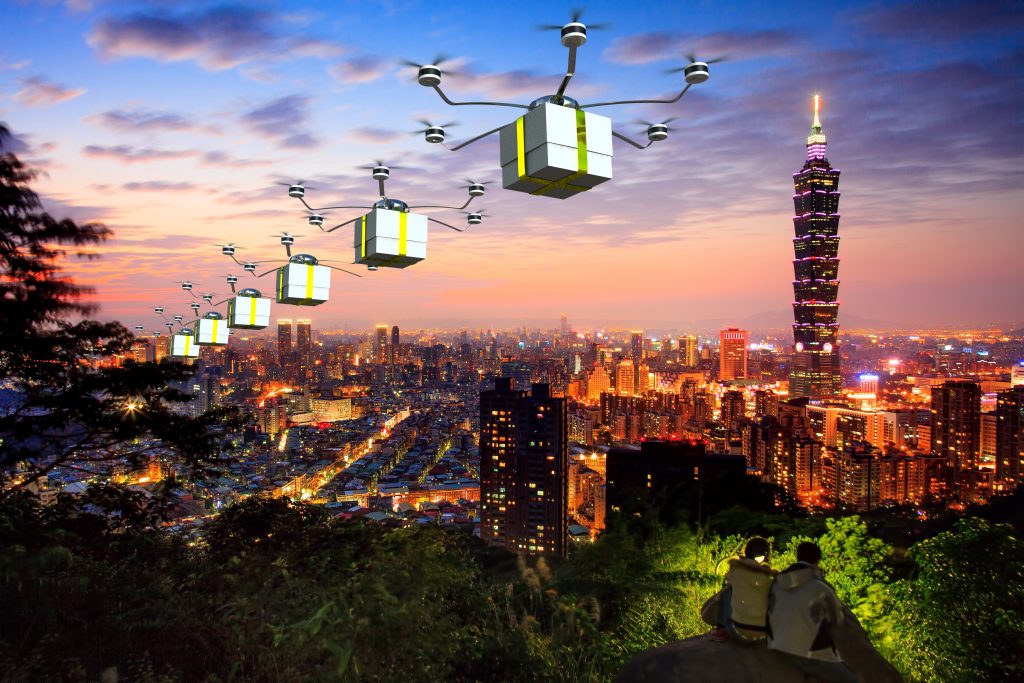
It’s a store! It’s a warehouse! It’s a design studio! It’s a factory! It’s… SuperCommerce!
Apologies to Superman, but stores are beginning to take on superpowers themselves, as they race for relevance by embedding logistics, design, and manufacturing into the traditional store layout. Today’s potent mix of e-commerce, an industrial renaissance, and the experience economy are bringing into focus a new business model—a single-space fusion of sales, customized design (CAD, VR, AR, and simulation), make-to-order (3D printing), and logistics (shipment from store), all tied together across the enterprise by real-time machine learning prescriptions crunched from social feeds of consumer sentiment, point-of-sale data, and inventory optimization, to fine-tune the staging and flow of goods.
Warehousing and logistics led the charge, grabbing the initial in-store space. This began as a straightforward option for today’s e-commerce customer—order online, pick up at convenient retail location. But retailers are reconsidering the strategy of in-store fulfillment of online orders, as they tally the cost of fixed assets losing sales from inventory pulled off the shelf for shipping, and the inefficiency of re-purposing floor staff from selling—each a drag on register revenues and customer service.

Turns out there’s a more “fulfilling” option—de-cluttering the store of endless aisles of inventory, and re-purposing the freed-up space as a dedicated mini-fulfillment center. This satisfies another vital need—locating distribution centers closer to customers to meet their expectations for last-mile service excellence. There’s even more upside—physically segregating fulfillment from sales within the store simplifies the implementation of warehouse automation technology like robotic pick-and-place (you don’t want robots scooting down retail aisles dodging customers).
Now that you’re selling and shipping from one site, why not let customers have the experience of either you or they—or both, in collaboration—design and build certain goods there as well? The wins go on and on—satisfying “maker” customers who want a creative experience, reducing floor space dedicated to items with iffy sales, lowering material, production and inventory carrying costs, reducing obsolescence and waste, and eliminating forecasting and demand planning software for some finished goods.
Ministry of Supply 3D-prints garments on demand via in-store manufacturing; Éram lets consumers personalize a design, then 3D-prints heels for their shoes in the  store; IKEA prototyped a 3D-printed chair to come from consumer self-scans. It’s starting in consumer goods, but industrials won’t be far behind: Staples already 3D-prints customized designs from your uploaded files as a service. Original equipment and aftermarket parts suppliers will offer 3D printing services at their walk-in sites for customers that need out-of-stocks or obsolete spare parts.
store; IKEA prototyped a 3D-printed chair to come from consumer self-scans. It’s starting in consumer goods, but industrials won’t be far behind: Staples already 3D-prints customized designs from your uploaded files as a service. Original equipment and aftermarket parts suppliers will offer 3D printing services at their walk-in sites for customers that need out-of-stocks or obsolete spare parts.
This vision is not pie-in-the-sky because it’s born of necessity, especially in consumer goods. With the maturation of e-commerce competition is ferocious, and the pressure on margins is unrelenting. Brick-and-mortar retail must reinvent itself around a model of deploying fixed assets cost-effectively through multipurpose on-site capabilities and experiences: sell, distribute, design, manufacture.
Throw in an espresso, and the customer may come out to shop.
Editor’s Note: Want to hear more about trends in manufacturing? Attend our upcoming Manufacturing in the Age of Experience in September in Shanghai!
